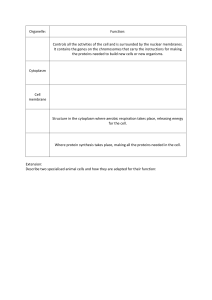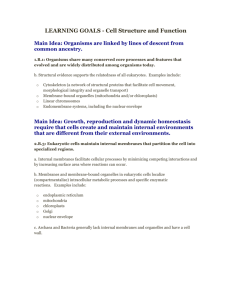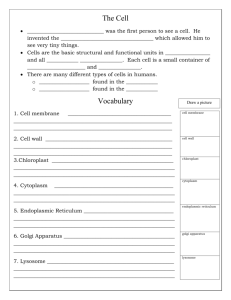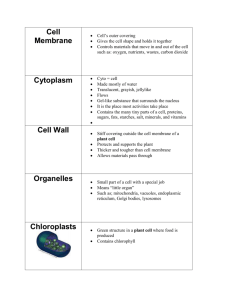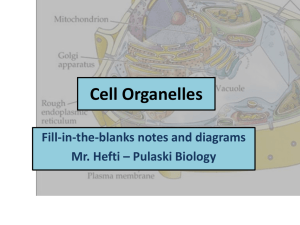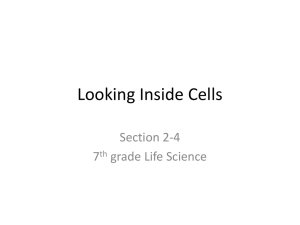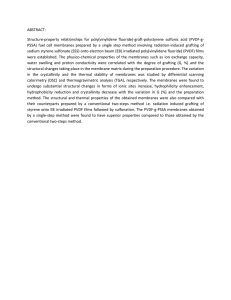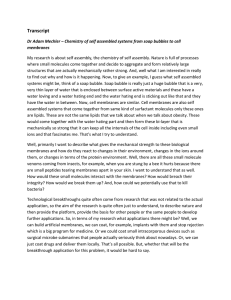Cell Vocabulary Review Worksheet
advertisement
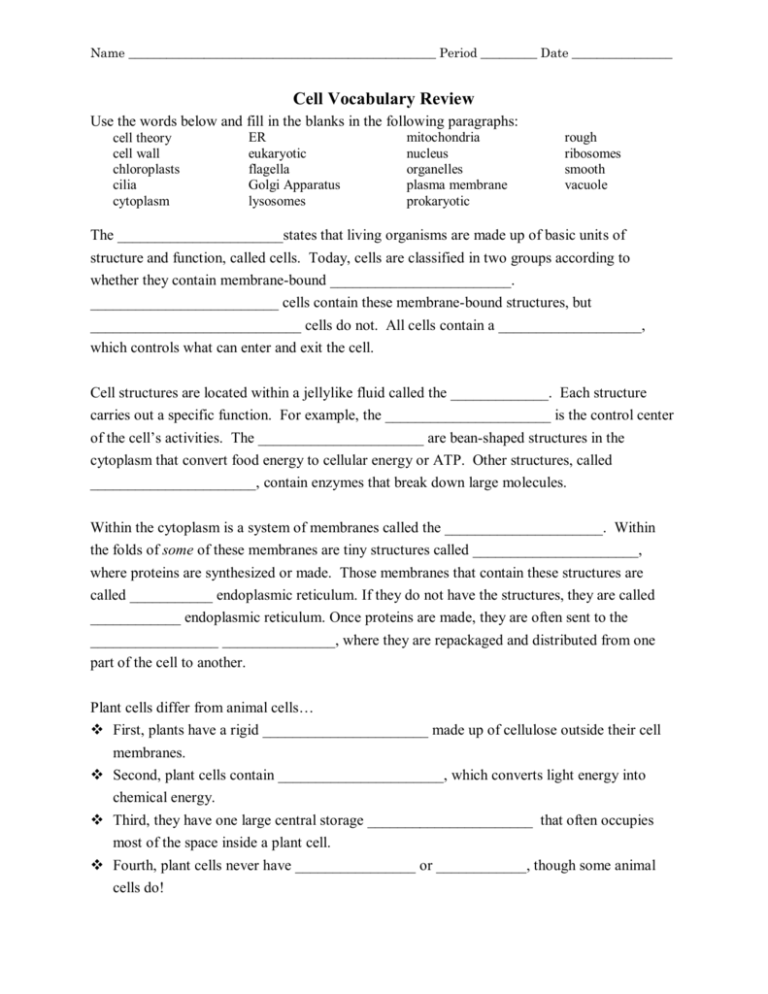
Name _________________________________________________ Period _________ Date ________________ Cell Vocabulary Review Use the words below and fill in the blanks in the following paragraphs: cell theory cell wall chloroplasts cilia cytoplasm ER eukaryotic flagella Golgi Apparatus lysosomes mitochondria nucleus organelles plasma membrane prokaryotic rough ribosomes smooth vacuole The ______________________states that living organisms are made up of basic units of structure and function, called cells. Today, cells are classified in two groups according to whether they contain membrane-bound ________________________. _________________________ cells contain these membrane-bound structures, but ____________________________ cells do not. All cells contain a ___________________, which controls what can enter and exit the cell. Cell structures are located within a jellylike fluid called the _____________. Each structure carries out a specific function. For example, the ______________________ is the control center of the cell’s activities. The ______________________ are bean-shaped structures in the cytoplasm that convert food energy to cellular energy or ATP. Other structures, called ______________________, contain enzymes that break down large molecules. Within the cytoplasm is a system of membranes called the _____________________. Within the folds of some of these membranes are tiny structures called ______________________, where proteins are synthesized or made. Those membranes that contain these structures are called ___________ endoplasmic reticulum. If they do not have the structures, they are called ____________ endoplasmic reticulum. Once proteins are made, they are often sent to the _________________ _______________, where they are repackaged and distributed from one part of the cell to another. Plant cells differ from animal cells… First, plants have a rigid ______________________ made up of cellulose outside their cell membranes. Second, plant cells contain ______________________, which converts light energy into chemical energy. Third, they have one large central storage ______________________ that often occupies most of the space inside a plant cell. Fourth, plant cells never have ________________ or ____________, though some animal cells do!
